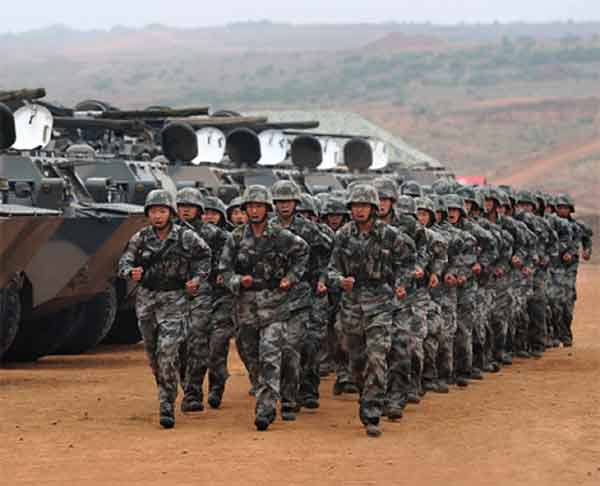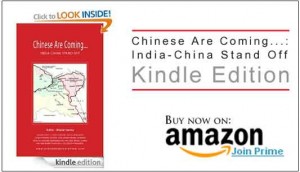An impressionable Henry Kissinger, the then U.S. national security adviser, was clearly awed by the presence of his Chinese interlocutor, Zhou Enlai, steeped in revolutionary history and the myths that go with it. In 1971, when Kissinger famously had his runny bowel in Rawalpindi, and instead of a toilet, landed in Beijing, was purportedly told by Zhou at a state banquet that it was “too early to say.”
This was a reply to a question – small talk – by Kissinger about what Zhou thought about the French Revolution of 1789. The first-generation American immigrant, clearly missing the European sense of history in the United States, was reportedly left speechless by Zhou’s remark. Only later could he describe his feelings about that comment that it was so sage, so oriental and so deeply spiritual that he felt consumed by the comment.
Only recently, in June 2011, has Kissinger’s interpreter, now a retired U.S. foreign service officer, busted the myth. According to him, Zhou had mixed up the meaning of Kissinger’s words and mistook them to mean the 1968 youth revolt in Paris and thus replied such.
The modernisation of the PLA really caught momentum after the difficult war the Chinese PLA fought with the Vietnamese in 1979…
Notwithstanding that little contretemps, if one looks at the “Middle Kingdom’s” dalliance with modernism, which began with the re-emergence of Deng Xiaoping towards the end of the 1970s, it included modernising the People’s Liberation Army (PLA). That was the last of Deng’s “Four Modernisations” agenda.
The modernisation of the PLA really caught momentum after the difficult war the Chinese PLA fought with the Vietnamese in 1979, on account of the Vietnamese army (Vietnamese People’s Armed Forces) attacking Cambodia to dislodge the Khmer Rouge regime, which Beijing was supporting.
An enunciation of the costs the PLA was bearing and the prices it had to pay tells a tale. According to an analysis, first, the Chinese military was using equipment and tactics from the era of the Long March, World War II and the Korean War, which meant, for example, that only Chinese officers carried assault rifles while the Vietnamese had more modern Soviet (and U.S.) equipment, combined with assault rifles for every soldier.
Second, under Deng’s order, China did not use its naval power and air force to suppress enemy fire, neutralise strong points and support its ground forces. Thus, the Chinese ground forces were forced into absorbing the full impact of the Vietnamese forces’ firepower.
Third, the PLA lacked adequate communications, transport and logistics. Further, it was burdened with an elaborate and archaic command structure, which proved inefficient in the Forward Edge of Battle Area (FEBA). Its maps were 75 years old. Runners were employed to relay orders because there were few radios – those that they did have were not secure.
…as China strives to become a global power, it is increasingly seeking “hard” power, i.e., military strength commensurate with its growing economic, diplomatic and cultural “soft” power.
Fourth, China was one of the only two countries in the world at the time that lacked the military rank system (the other being Albania), and thus commands were not effective. Fifth, the Cultural Revolution had significantly weakened Chinese industry and military hardware produced suffered from poor quality and thus did not perform well (sinovietnamesewar.com, accessed 2 April 2013).
This gave a jolt to the leadership of Deng as the chairman of the Central Military Commission (CMC) – the controlling authority of the Chinese Communist Party (CCP) over the PLA – and elders like Marshall Ye Jianying and General Yang Shangkun. Through the 1980s, the bloated manpower of the PLA began to be shed, the command and control structures were established, and the force was first restructured for a “people’s war under modern conditions” and then for the objective of “limited war.” (David Shambaugh, Modernising China’s Military: Progress, Problems, and Prospects, Berkeley: University of California Press, 2002).
While this first phase of “modernisation” was still ongoing came the First Iraq War, which broke out in February 1991. The technology-rich environment of the allied attack on the elite forces of President Saddam Hussein left a deep imprint in the minds of the Chinese leadership. As Shambaugh has written in his aforementioned book, this once again shook up the Chinese leadership, thus ushering in a period of deep study of the war strategy, operations and tactics.
As Shambaugh has written in another volume, the CCP at its apex Central Committee sponsored a series of studies on the causes of the demise of the Soviet Union. One could draw a linkage between the two studies in terms of the threat-board that the Chinese leadership faced at the final decade leading up to the twenty-first century.
This is also the time when China had begun the journey of a sustained 10-plus per cent growth, which continued for the next decade. Thus, as the growth of the gross domestic product (GDP) exploded, there was more money to be spent on defence. Most Western watchers of China believe that the Chinese elite leadership began spending money for the cause of modern warfare only between 1997 and 1999.
China overall seeks military power to mitigate the rising American military presence in the Asia Pacific, and to establish itself as a credible rival to the United States in this region.
In 1997, the Chinese had spent $15.5 billion; in 1998, $17.8 billion; and in 1999, $20.7 billion. So a back-of-the-envelope calculation shows that the Chinese increased the spending from “pump priming” expenditure of $15.5 billion to a 34 per cent growth in the penultimate decade of the twenty-first century – all over three years.
Since then, China has consistently posted a growth in defence expenditure at an average rate that has been in double digits from the late 1990s till today. Even in the 2013 budget, the defence expenditure of the nation rose by over 10 per cent. In the previous year, 2012, it was 11-plus per cent.
How have this military expenditure and the accompanying philosophy impacted the PLA? The PLA today is not only ground-based. In its portfolio of functions are what Richard Bitzinger, a Singapore-based scholar, calls the five missions. They are as follows:
For one thing, as China strives to become a global power, it is increasingly seeking “hard” power, i.e., military strength commensurate with its growing economic, diplomatic and cultural “soft” power. Second, Beijing appears to be more prone to using military force (or the threat of military force) to defend and promote its regional interests, such as stressing its territorial claims in the South China Sea and protecting local sea lanes of communication (SLOCs) vital to its energy supplies and trade. Consequently, building up that military wherewithal is instrumental to this strategy. Third, it aspires to increase its military capacities to keep the pressure on Taiwan not to declare independence and to eventually accept some kind of reunification with the mainland; at the same time, China wants to reduce the willingness of the United States to intervene on behalf of Taiwan in case of a cross strait military clash by raising the costs of involvement for the United States.
Fourth, China wants to increase its capacities for military operations other than war (MOOTW) so as to defend its growing interests around the world, to which end it is participating more in activities such as peacekeeping operations, humanitarian assistance and disaster relief operations, and anti-piracy operations. Finally, China overall seeks military power to mitigate the rising American military presence in the Asia Pacific, and to establish itself as a credible rival to the United States in this region (Richard Bitzinger, “Modernising China’s Military, 1997-2012,” China Perspectives, No. 2011/4).
Each of these missions is a stepping stone for the PLA to emerge as the arrowhead of comprehensive national power of the potential superpower that the world is keenly watching.






